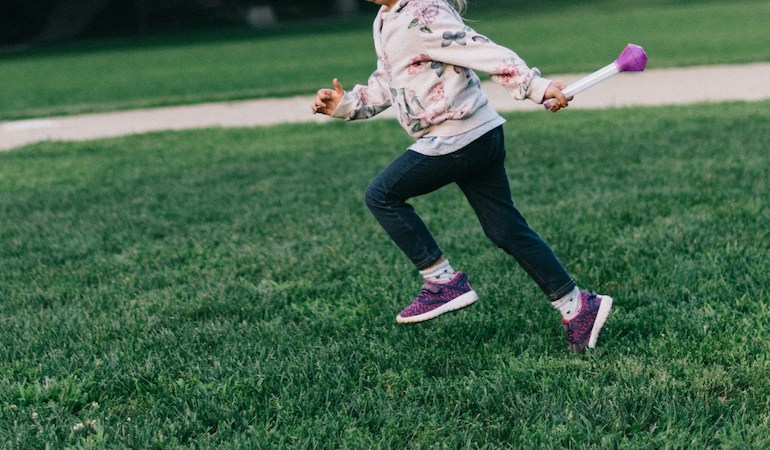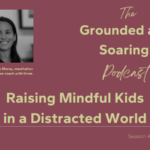Every parent knows the moment is coming—when your child first looks at their body and wonders, ‘Why don’t I look like them?’ or ‘Why is my body like this?’
Young children are innately curious about their own bodies and the people around them—and how we answer their questions matters. According to research, children start developing ideas about their bodies as early as age 3, making our early conversations especially important.
They may have questions about their body and other people’s bodies as they are learning to further understand human nature. The words we choose and the tone we set can shape the foundation for how they’ll view themselves and others.
As parents and educators, we have the ability — and even the responsibility — to create a space where body talk is honest, kind, and rooted in appreciation. This isn’t just about answering questions; it’s about helping them build a lifelong sense of body positivity that celebrates what they can do and who they are, beyond appearances. Research shows that these early conversations can shape how children think about their bodies throughout their lives.
It is important to have open and honest conversations about the body, but also stay brief and factual. Engaging in age-appropriate discussions about the body can create healthy norms and be empowering. Use accurate anatomical terms when referring to body parts to foster a sense of comfort and understanding.
By reacting calmly to questions from your child and providing factual, honest answers, any concerns will be demystified. Your child’s curiosity is normal and comes from an authentic place of seeking understanding.
Key Principles
Focus on Functionality: Emphasize the amazing things our bodies can do rather than focusing solely on appearance. Discuss how our bodies help us move, play, learn, and refine our five senses. Highlight the importance of taking care of our bodies through nourishing food, exercise, rest, and self-care practices. You can support your child through constructing their own self-awareness. By consuming that food, how did it make your body feel? After a full night of sleep, does your body feel ready to take on the day?
Create a Safe and Judgment-Free Environment: Foster an open and supportive environment where children feel comfortable expressing their thoughts, feelings, and questions about their bodies. Listen actively, validate their experiences, and address any concerns or misconceptions they may have with empathy and understanding. You can also share any of your own experiences, children absorb and retain information through real-life stories, especially from loved ones around them.
Encourage Positive Self-Talk: Inspire your children to appreciate and celebrate their bodies for all that they are capable of, rather than focusing on perceived flaws or shortcomings. Model positive body language and affirmations to reinforce a healthy body image. By focusing on the strengths of your physicality – the ability to walk, stretch, run quickly, carry heavy objects, play sports, etc. – will demonstrate your appreciation for the importance of strong and able bodies. Avoid making negative comments about your own body or commenting on others, as children often mimic behavior based on what they observe. Instead, model self-love, body acceptance, and healthy habits to inspire and empower your child to do the same. Instead of focusing on their physical appearance, emphasize the value your child brings through their personality, skills, talents, or kindness.
Celebrate Diversity: Guide your child to appreciate and respect the diversity of bodies. Emphasize that bodies come in all sorts of shapes, sizes, colors, and physical ability and that each body is unique and worthy of love and acceptance. Explore books that showcase those diverse representations of bodies to broaden their perspectives. Avoid placing too much value on physical appearance and your child will too! Instead, try to talk to them about all the contributing ways that make up a person, such as personality, skills, interests, and how they make others feel.
Build a Culture of Body Confidence: Closing Thoughts
Conversations about body positivity aren’t just about now—they’re building the framework for how your child will see themselves for years to come. By emphasizing the wonders of the body, creating a supportive environment, and modeling positive body talk, we are helping our children grow into confident, self-aware individuals. And remember, it’s not just what we say but how we live that teaches our children the most.
“I’ve learned that people will forget what you said, people will forget what you did, but people will never forget how you made them feel.” – Maya Angelou
Parent-Friendly Resources
- Common Sense Media’s Body Image Guide for Parents
- PBS Parents: Talking About Bodies
- Child Mind Institute: Body Image Resources
- NEDA’s Parent Toolkit
Recommended Books
- Bodies Are Cool by Tyler Feder
- All Bodies Are Wonderful by Beth Cox

Since 2006, Cheryl has been guiding Marin Montessori primary children, supporting both children and their parents in best practices for independence and healthy child development. She earned a bachelor’s degree in sociology from the University of California, Santa Barbara, and earned her AMI Primary Diploma in San Diego. In addition to those credentials, she also holds a Master’s in Education from Loyola College in Maryland. At home, Cheryl is a Montessori parent to two young children.





